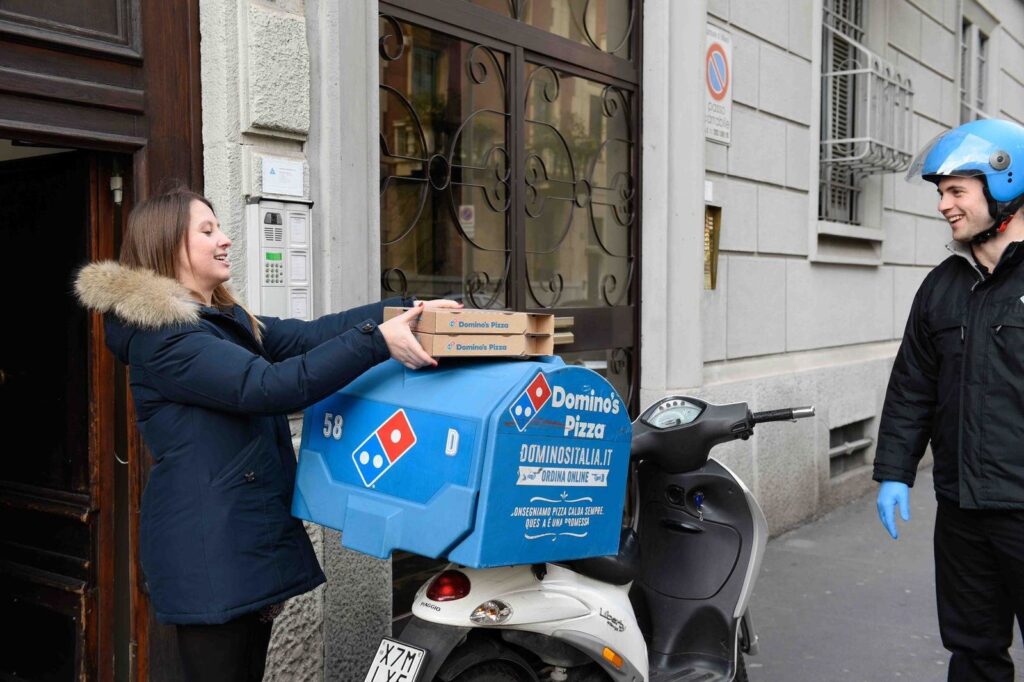
Delivery, what it really means
The interview with Davide D’Andrea Ricchi on Start Franchising:
Due to the Coronavirus emergency, many restaurant companies have focused on home delivery. Here are the pros and cons of this strategy.
Due to the Coronavirus emergency, many restaurant companies have increased delivery or introduced it from scratch in their services. But is this lever suitable for all restaurant activities? And what steps and costs need to be considered? We asked Davide D’Andrea Ricchi, founder and CEO of Franchise Development.
With reference to the current context, necessity has turned into a virtue. Those who had not yet incorporated their business model into the delivery formula have in some cases introduced it to avoid seeing their turnover completely wiped out or to contain costs. All this compatibly with what has been imposed by recent Decrees. That said, however, we can say that delivery had already seen its boom in central-northern Italy and in major cities since 2018, with an overall turnover of 250 million euros. I can say that the current situation has prompted those who may have hesitated initially to assess its immediate feasibility to include it among the service items, and therefore, revenue. In this sense, I do not believe it is a revolution, but an awareness of the facts. Furthermore, in the United States, the delivery system is reaching an interesting level of exacerbation, as exemplified by the successful company Blue Apron, which delivers raw materials and recipes to the customer for chef-proof dishes.
What are the requirements for efficient delivery
Undoubtedly, from an entrepreneurial point of view, it’s the menu. There are no legal or operational requirements of any kind: just as a dish is served at a table, it can be delivered, but it all depends on how the menu is designed. It should be compact to facilitate reading on delivery apps, but above all “practical”. It’s no coincidence that pizzerias, sushi, and hamburger joints dominate delivery, because we’re talking about easily deliverable products where plating is not as crucial as for traditional gourmet cuisine. In addition, the food cost of the menu should be considered. The impact of delivery weighs on turnover, therefore, having a high incidence of raw materials would dangerously lower margins despite the increase in sales volumes. In my opinion, a delivery sale with a food cost equal to or higher than 30% of the sale price would not be so profitable in the food sector, unless it involves very high sales volumes and a highly efficient production system. In this regard, it might be possible to “bypass” the “not low” food cost limit by reducing indirect costs such as personnel and rent, creating a Spartan format in “dark kitchens”, i.e., without seating (and therefore requiring less space and fewer personnel) for sales solely through delivery (or take away).
How much does it impact the income statement of a business
It is usually a direct cost that depends on the commissions applied by third-party carriers such as Just Eat and Deliveroo, or even small players operating in provincial or secondary territorial areas. We can say that the average impact is between 20 and 30% of the order price. Indirectly, the impact of any necessary support resources to avoid congesting processing between delivery and seated customers should also be considered. You might have your own fleet of riders, and this becomes essential in small towns where large or small companies do not operate (or even study, through careful feasibility analysis, whether it is still convenient to have your own or rely on third parties). So, we are talking about significant figures, a significant cost to reach those customers that we would not otherwise reach, especially in light of new lifestyles that see people spending more and more time at home.
Is it a service accessible to everyone or in line with any type of activity
As already mentioned, it depends on the practicality of delivering menu items. That said, we can say that delivery can theoretically be applied to all types of food and non-food formats. Even pharmacies. The only real discriminator is the margin: it is pointless to offer delivery service if we give all our earnings to the third-party carrier.
What are the pros and cons of delivery activity
Let’s start with the cons. Certainly, the impact on turnover of costs resulting from the delivery system. In addition, there are potential critical issues in the kitchen which, especially on peak days, could result in overwork, lengthen delivery times, and therefore generate negative reviews both for the restaurant service itself and for deliveries. The pros are all in the increase in sales volumes, albeit with lower margins. In fact, delivery allows reaching a larger number of customers even without having many covers. There are many businesses with a large number of customers who have never even seen the premises, but are still regular customers. Another tangible and appreciable advantage on the economic side is the optimization of waste, reducing waste.




